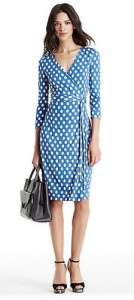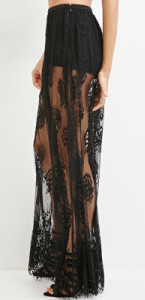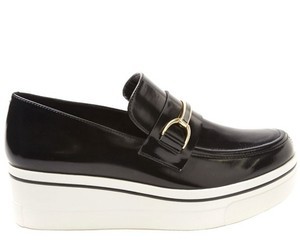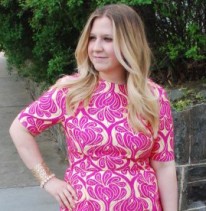If you made “shopping wisely” your new year resolution, we have just the formulas and methods you need to reduce your impulse buys! Sian, from the Girl, Inbetweenied, shares how she’s planning on being more selective and smarter when she’s out shopping:
For a long time, I found myself roaming around the mall when I was bored, and shopping online, mindlessly searching, clicking, and purchasing both expensive and inexpensive items that I just don’t need or wear enough to make the purchase worthwhile. Anyone else out there fall into this money-sucking habit? The evidence of my habit is in my Poshmark closet, where I have listed a whopping 325 items for sale over the past 6 months! 325 items! And my closets are still stuffed. Yikes.
Over the past year, I have become much more selective in the clothing, jewelry, makeup, skincare, etc. that I buy. How you ask? By Calculating Cost Per Wear before purchasing that “must have” item. It 1) Helps stop the impulsive buying because it makes you think about the wearability and cost of the item and 2) Answers the “is it worth it question” with cold hard facts!
Here’s how you calculate cost per wear. There are two ways to calculate (don’t worry — 4 examples will follow)!
Formula 1 — Use for items you can wear at least once a month and investment pieces.
(# of wears per month) x (# of months you can wear it in a year – remember, you can only wear items in season) x (# of years it will last, including quality; how long it will remain in fashion) = # of wears.
(Cost of item) ÷ (# of wears) = Cost per Wear
Formula 2 — Use for items you can’t wear at least once a month, e.g. special occasion wear, or you don’t feel like doing all the math in Formula 1, and just want simple, quick math while standing in the store!
Cost of item ÷ estimated # of total wears = Cost per Wear

Example 1 — A Wrap Dress using Formula 1
You are looking for a dress to wear to work that can also transition for a night out, and something you can wear on the weekend. You scope out this classic DVF wrap dress that you can literally wear EVERYWHERE. Let’s use Formula 1 since you can wear it at least monthly and it’s an investment piece. The dress costs $398.
2 wears per month x 6 months of wear in a year x 5 years quality and how long it will be in fashion = 60 total wears
$398 ÷ 60 wears = $6.63 per wear
Lesson here — even though this dress is expensive at first, the cost per wear is low because of the quality and versatility of the dress. Now let’s look at a “must have” cheap skirt from Forever 21.
 Example 2 — A cheap “Going Out” look using Formula 2
Example 2 — A cheap “Going Out” look using Formula 2
You and your girls are going out for a night of dancing. You read that the sheer maxi skirt is really on trend right now. You find the perfect skirt from Forever 21 that you figure will maybe last 2 wears — after all, you are a crazy breakdancer, you know it will get ruined quickly, and the quality is low. Plus, this will likely only stay on trend this year. Let’s use Formula 2 since you basically can’t wear this anywhere but the club (unless you want to get fired from your job), the quality is low, and it will only be on trend for a season. The skirt is $24.90.
$24.90 ÷ 2 wears = $12.45 per wear
So that $398 DVF wrap dress is actually cheaper per wear than your cheap Forever 21 purchase! Now that doesn’t mean it’s not worth the purchase, but at least you are informed before you buy!
Example 3 — Pricey Platform Sneakers using Formula 1
 You love the platform sneaker trend and spot these Stella McCartney’s that are perfect! At a whopping $525 you are trying to decide if they are worth it. You can only wear them on the weekend, and you know they won’t ago with everything. The quality is great but they likely will only be on trend for the next year. Let’s use Formula 1 since you can wear it at least once a month, and they are an investment. These fancy shoes cost $525.
You love the platform sneaker trend and spot these Stella McCartney’s that are perfect! At a whopping $525 you are trying to decide if they are worth it. You can only wear them on the weekend, and you know they won’t ago with everything. The quality is great but they likely will only be on trend for the next year. Let’s use Formula 1 since you can wear it at least once a month, and they are an investment. These fancy shoes cost $525.
2 wears per month x 5 months of wear in a year x 1 year how long it will be in fashion = 10 total wears
$525 ÷ 10 total wears = $52.50 per wear
Phew — that’s a really high cost per wear!
Example 4 — A special event dress using Formula 2
You REALLY love that Topshop sequin shift dress you scouted out for the New Years Eve party next week. You factor in that it’s a special occasion dress that people will notice, so you can’t wear it to every upcoming special event you have, and because of the turtleneck and long-sleeves, you can only wear it in winter. So you figure you can wear it about 2 times in a year. You estimate that it will remain on trend for 3 years, equalling 6 wears over the lifespan of the dress (2 wears per year x 3 years). Let’s figure out if it’s worth the investment. This special dress costs $115.
$115 ÷ 6 wears = $19.16 per wear
Not to shabby for a special occasion dress that you love!
I hope this helps you to stop and think before making that impulsive purchase! My goal this year is to continue to sell and donate items I don’t wear enough, and simplify my closet!
 Sian is the woman behind the stylish fashion and beauty blog, Girl, Inbetweenied. She blogs to be a “fashion and beauty inspiration for the average-sized woman” in response to the fashion industry’s unrealistic beauty standards of female size. A resident of Washington DC, Sian is a proud Inbetweenie and advocate of universal beauty for all sizes. Follow Sian on Facebook, Twitter, and Instagram!
Sian is the woman behind the stylish fashion and beauty blog, Girl, Inbetweenied. She blogs to be a “fashion and beauty inspiration for the average-sized woman” in response to the fashion industry’s unrealistic beauty standards of female size. A resident of Washington DC, Sian is a proud Inbetweenie and advocate of universal beauty for all sizes. Follow Sian on Facebook, Twitter, and Instagram!

